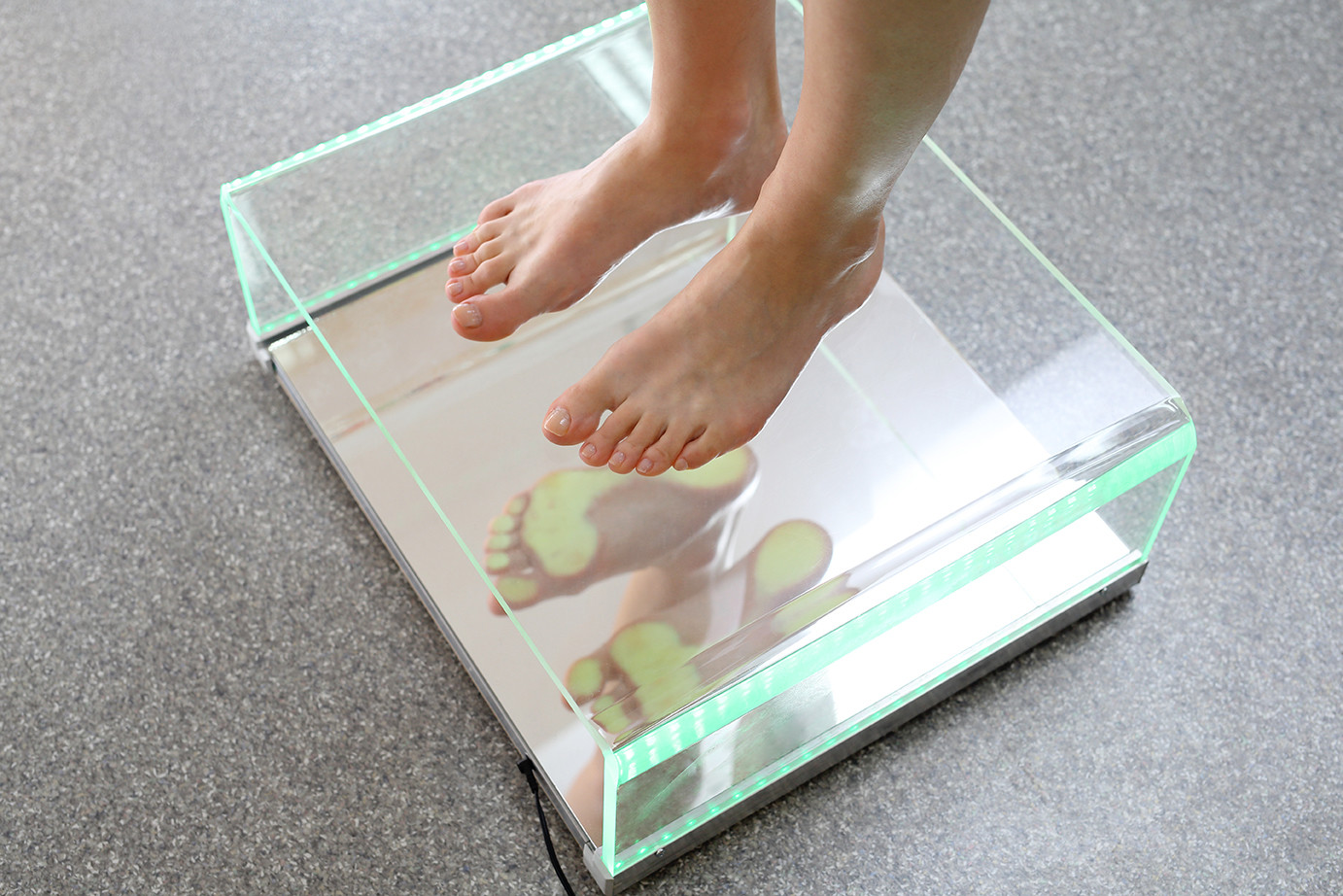It is very important for people with Diabetes to check their feet regularly. A number of component causes, most importantly peripheral neuropathy, interact to complete the causal pathway to foot ulceration.
Components of a foot exam:
- General inspection: A careful inspection of the feet in a well-lit room should always be carried out after the patient has removed shoes and socks. Because inappropriate footwear and foot deformities are common contributory factors in the development of foot ulceration.
- Dermatological assessment: The dermatological assessment should initially include a global inspection, including interdigitally, for the presence of ulceration or areas of abnormal erythema. The presence of callus (particularly with hemorrhage), nail dystrophy, or paronychia should be recorded.
- Musculoskeletal assessment: The musculoskeletal assessment should include evaluation for any gross deformity. Rigid deformities are defined as any contractures that cannot easily be manually reduced and are most frequently found in the digits.
- Neurological assessment:
Peripheral neuropathy is the most common component cause in the pathway to diabetic foot ulceration. The clinical exam recommended, however, is designed to identify loss of protective sensation (LOPS) rather than early neuropathy.
128-Hz tuning forks.
The tuning fork is widely used in clinical practice and provides an easy and inexpensive test of vibratory sensation. Vibratory sensation should be tested over the tip of the great toe bilaterally. An abnormal response can be defined as when the patient loses vibratory sensation and the examiner still perceives it while holding the fork on the tip of the toe.
Pinprick sensation.
Similarly, the inability of a subject to perceive pinprick sensation has been associated with an increased risk of ulceration. A disposable pin should be applied just proximal to the toenail on the dorsal surface of the hallux, with just enough pressure to deform the skin. Inability to perceive pinprick over either hallux would be regarded as an abnormal test result.
Ankle reflexes.
Absence of ankle reflexes has also been associated with increased risk of foot ulceration. Ankle reflexes can be tested with the patient either kneeling or resting on a couch/table. The Achilles tendon should be stretched until the ankle is in a neutral position before striking it with the tendon hammer. If a response is initially absent, the patient can be asked to hook fingers together and pull, with the ankle reflexes then retested with reinforcement. Total absence of ankle reflex either at rest or upon reinforcement is regarded as an abnormal result.
Vibration perception threshold testing.
The biothesiometer (or neurothesiometer) is a simple handheld device that gives semiquantitative assessment of vibration perception threshold (VPT). As for vibration using the 128-Hz tuning fork, vibration perception using the biothesiometer is also tested over the pulp of the hallux. With the patient lying supine, the stylus of the instrument is placed over the dorsal hallux and the amplitude is increased until the patient can detect the vibration; the resulting number is known as the VPT. This process should initially be demonstrated on a proximal site, and then the mean of three readings is taken over each hallux. A VPT >25 V is regarded as abnormal and has been shown to be strongly predictive of subsequent foot ulceration.
- All patients with diabetes must have their feet evaluated at least at yearly intervals for the presence of the predisposing factors for ulceration and amputation (neuropathy, vascular disease, and deformities).











